Whistler’s Woman in White: Joanna Hiffernan – a ‘beautifully focused’ show
New exhibition explores the relationship between James McNeill Whistler and his muse
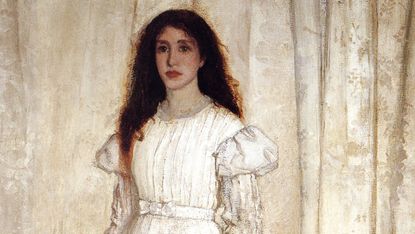
You might have never heard Joanna Hiffernan’s name, but you probably know her face, said Alastair Smart in The Daily Telegraph. Born in Ireland in the 1840s, Hiffernan was the lover of the American artist James McNeill Whistler, and the model for his 1862 painting Symphony in White, No. 1: The White Girl – one of the most controversial works of its era.
Depicting Hiffernan in “a white house dress standing before a white muslin curtain”, it broke all the rules of contemporary portraiture: its scale was “almost life-size”, a format generally reserved for pictures of “important men”; the use of white on white was “radical”. The appearance of its model, meanwhile – notably her “free-flowing” red hair – lent itself to accusations of lewdness. It was a “succès de scandale” that played no small part in establishing Whistler’s reputation.
This new exhibition explores the relationship between the artist and his muse, pairing the work (here labelled Woman in White) with a number of paintings and prints by Whistler and his contemporaries, including no less than 30 depictions of Hiffernan. It’s a gripping show that “tells a fascinating story with the aid of first-rate pictures”.
Subscribe to The Week
Escape your echo chamber. Get the facts behind the news, plus analysis from multiple perspectives.

Sign up for The Week's Free Newsletters
From our morning news briefing to a weekly Good News Newsletter, get the best of The Week delivered directly to your inbox.
From our morning news briefing to a weekly Good News Newsletter, get the best of The Week delivered directly to your inbox.
By all accounts, Hiffernan was “quite a woman”: five years Whistler’s junior, she was his “mistress, friend, companion and sometime business manager”, said Melanie McDonagh in the London Evening Standard. Gustave Courbet, for whom she also modelled, remembered her singing Irish songs “with the soul of an artist”. Courbet’s sensuous “head-portrait” of her is one of the highlights here; another is Whistler’s portrayal of “Wapping low life”, in which Hiffernan looks “very much at home”.
But a few striking portraits “do not make an exhibition”. The rest of the show mainly consists of paintings only tangentially related to the subject: Klimt’s portrait of Hermine Gallia makes the grade because it depicts a woman in white, while Whistler’s interest in Japan justifies the inclusion of a number of unrelated Hiroshige woodblock prints. “This show, frankly, is a mess. It doesn’t really do anybody justice.”
I disagree, said Laura Cumming in The Observer. The exhibition is packed with arresting images. There are three “magnificent” Courbet seascapes from a holiday he took with the couple; a series of “fascinating” Whistler prints that capture Hiffernan’s “amazing copper tresses”; and a “marvellously dynamic” poster for a play of Wilkie Collins’s novel The Woman in White, with which Whistler’s portrait became associated. Nothing, however, rivals the painting itself. Seven foot tall, with “an astonishing range of colours in its palette of whites”, it is an unqualified masterpiece. Small as it is, this is a “beautifully focused” exhibition.
The Royal Academy of Arts, London W1 (royalacademy.org.uk). Until 22 May
Create an account with the same email registered to your subscription to unlock access.
Sign up for Today's Best Articles in your inbox
A free daily email with the biggest news stories of the day – and the best features from TheWeek.com
-
 The week's best photos
The week's best photosIn Pictures Playful goslings, an exploding snowman, and more
By Anahi Valenzuela, The Week US Published
-
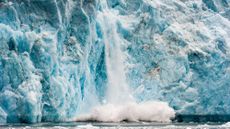 What is rock flour and how can it help to fight climate change?
What is rock flour and how can it help to fight climate change?The Explainer Glacier dust to the rescue
By Devika Rao, The Week US Published
-
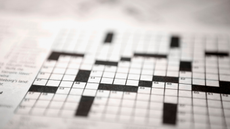 Crossword: April 19, 2024
Crossword: April 19, 2024The Week's daily crossword puzzle
By The Week Staff Published
-
 6 serene homes in Vermont
6 serene homes in VermontFeatures Featuring a four-level Shaker barn in Hartland and a Scandinavian-inspired home in Stowe
By The Week US Published
-
 Amanda Montell's 6 favorite books that will expand your knowledge
Amanda Montell's 6 favorite books that will expand your knowledgeFeature The linguist recommends works by Mary Roach, Alice Carrière, and more
By The Week US Published
-
 Rowan Beaird recommends 6 compelling books from the 1950s
Rowan Beaird recommends 6 compelling books from the 1950sFeature The author recommends works by Patricia Highsmith, Shirley Jackson, and more
By The Week US Published
-
 6 spacious homes with great rec rooms
6 spacious homes with great rec roomsFeature Featuring a suspended fireplace in Arizona and a marine-themed home in Maine
By The Week Published
-
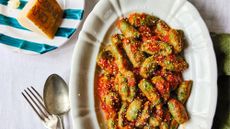 Recipe: gnocchi di spinaci (spinach gnocchi)
Recipe: gnocchi di spinaci (spinach gnocchi)The Week Recommends Forget the potatoes for this gnocchi made of the 'classic combination' of spinach and ricotta
By The Week UK Published
-
 Stephen Graham Jones' 6 scary books with deeper meanings
Stephen Graham Jones' 6 scary books with deeper meaningsFeature The best-selling author recommends works by Stephen King, Sara Gran, and more
By The Week US Published
-
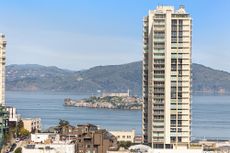 6 stylish homes on the top floor
6 stylish homes on the top floorFeature Featuring a 1925 art deco high-rise in San Francisco and a factory-turned-home in Los Angeles
By The Week US Published
-
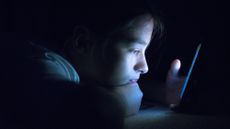 The Anxious Generation: US psychologist Jonathan Haidt's 'urgent and essential' new book
The Anxious Generation: US psychologist Jonathan Haidt's 'urgent and essential' new bookThe Week Recommends Haidt calls out 'the Great Rewiring of Childhood' phenomenon
By The Week UK Published